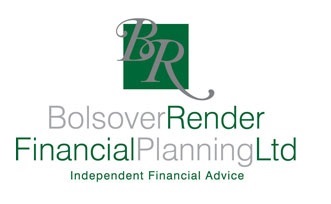Many companies offer a pension scheme to their employees. There are numerous different types available and usually the company will put some money into your pension if you decide to join.
It is important that you take into account your existing pension provision or that from your previous employer before making any decisions.
We will be able to explain the features of your company’s arrangements, and may be able to assist you to select the right investment funds for your own needs.
Auto Enrolment
People are living longer lives. This means people can enjoy more time in retirement and need to plan and save for their later years. The government estimates that around seven million people are not saving enough to meet their retirement aspirations and has put changes in place, which commenced from October 2012, affecting both employers and employees.
What do the changes mean for employers?
Since 2012, employers have been required to automatically enrol all ‘eligible jobholders’ into either the National Employers Savings Trust (NEST) or an alternatively another form of scheme, such as a Group Stakeholder Scheme, Group Personal Pension Scheme or an Occupational Pension Scheme which is deemed as a ‘qualifying’ or a ‘certified’ workplace pension. Both employers and employees have to make minimum contributions into the scheme, though employees are allowed to opt out. The process is being staged, dependent on employee head count, from 1st October 2012 to 1st February 2018, with large employers being the first to have to take action.
Who needs to be automatically enrolled?
All jobholders working in Great Britain aged at least 22 years old who have not yet reached State Pension age and are earning more than £10,000 a year (threshold subject to periodic review) will need to be automatically enrolled into either an employer’s workplace pension or NEST.
What is the minimum contribution employers must pay?
Under NEST (or an alternative ‘qualifying scheme’), employers will need to contribute 1%-3% (phased) on a band of earnings for eligible jobholders – between £5,876 (£5,876 from 2017/2018) and £43,000 (£45,000 from 2017/2018). This is supplemented by the jobholder’s own 1%-4% (phased) contribution and up to 1% in the form of income tax relief. From April 2019, overall contributions and tax relief will total at least 8% for this type of scheme.
Who can opt in?
Jobholders aged between 16 and 22, and between State Pension age and 75 who are earning more than the lower earnings figure, are able to opt in to their employer’s workplace pension and will qualify for the compulsory minimum employer contributions. Those earning below the above figure may opt in to their employer’s workplace pension but their employer is not required to make a contribution, but may do so if they wish. Individuals may opt out of automatic enrolment should they choose, but employers will be required to auto-enrol those individuals again, 3 years later.
Which scheme can employers use?
Employers will be able to choose the pension scheme(s) they want to use provided the scheme(s) meet certain quality criteria (including any current scheme). These may be based on contributions or benefits people receive.
There is in addition a ‘certification’ process whereby Employers can register an existing scheme ‘as good as’ or ‘better than NEST’ with any of the following being ‘acceptable’.
Money Purchase Schemes (existing):
- A minimum 9% contribution of pensionable pay (including a 4% employer contribution) or;
- A minimum 8% contribution of pensionable pay (with a 3% employer contribution) provided pensionable pay constitutes at least 85% of the total pay bill or;
- A minimum 7% contribution of earnings (3% employer contribution), provided that the total pay bill is pensionable
Final Salary Schemes (existing):
In order to qualify, an existing final salary scheme will need to have a contracting out certificate in force as this is taken as evidence that the scheme already meets the ‘reference scheme test’ standard. This test requires schemes to commence a pension at age 65, payable for life and must be:
a) 1/120th of average qualifying earnings in the last 3 tax years, preceding the end of pensionable service, multiplied by
b) The number of years of pensionable service up to a maximum of 40.
When do the changes start?
They have already commenced, arriving in October 2012. The plan is to stage in automatic enrolment over a period of years, starting with large employers, medium and then small. To help employers adjust gradually, the plan is to phase in the employer contribution levels – starting at 1% and then moving to 2% and finally 3%. The jobholders’ contributions of 1%-4% are also phased in over the same period.
The Department for Work and Pensions (DWP) and The Pensions Regulator (TPR) are providing information to help prepare employers and individuals for the changes. TPR has been writing individually to all employers at around 12 months and again at 3 months in advance of their automatic enrolment start date, to inform them when they need to take action and what they need to do to comply.
What should I be doing now?
If you are an employer, you should ensure you understand the basic information on these changes, your staging date and which employees will be affected. A review of existing arrangements should also be undertaken sooner rather than later. A review is also important as The Pensions Regulator, who is overseeing the implementation process, does carry the power to levy a £400 fixed penalty and escalating daily fines on employers who do not take action.
Pensions are a long term investment. You may get back less than you put in. Pensions can be and are subject to tax and regulatory change; therefore the tax treatment of pension benefits can and may change in the future.
